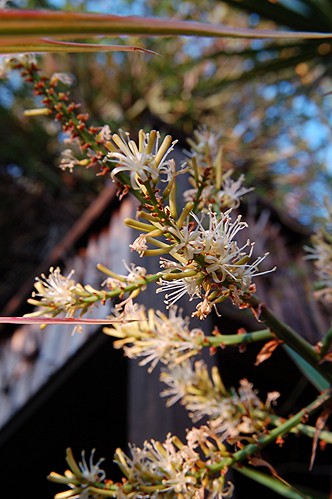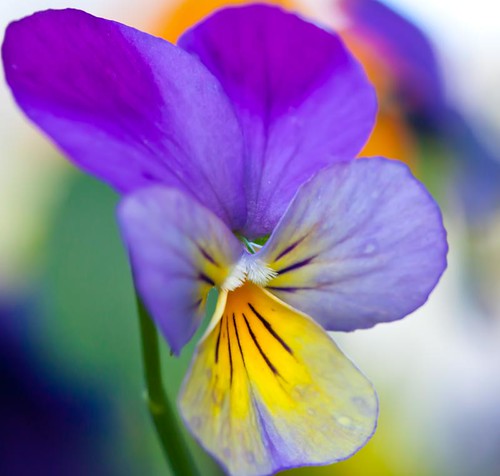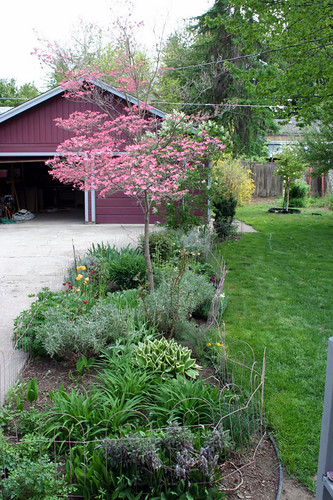
Dracaena marginata blooming by our Bamboo Gate by jungle mama
TheGardenLady received this question from Luella.
I bought some plants from Kmart a few weeks ago and I was wondering if I could plant them outside. I have a mother-in-law’s tongue, a drac marg (whatever that is), and what I believe is a rubber tree.
You did not tell me where you live for TheGardenLady to know if you can grow them outdoors. The plants that you bought do not tolerate any frost or snow or they will die. Since you bought them at Kmart, I imagine you live in an area that cannot grow them outdoors. All three plants that you bought are considered ornamental indoor plants in most of the continental United States.
Dracaena marginata comes from Madigascar. If you live in the plant hardiness zones 9 and 10 you could grow it outdoors.
The rubber tree, also known as a Ficus elastica, will grow outdoors in hardiness zones 10 or 11. Hawaii is in these zones. In a pot, the Ficus remains manageable but these plants can become really huge trees that can grow up to 50 feet tall. So even if you lived in a zone where the Rubber Tree would live outdoors, I doubt that you would have enough land to grow such a large tree. But don’t worry about its getting too big in your house. When grown in a pot the Rubber tree should only grow about 10 feet tall.
If you live in California and some other hot areas of the US, you might be able to grow the Mother-In-Law’s Tongue plant, Sansevieria, outdoors. You need to live in Plant Hardiness Zone 8 or higher.
Check the Hardiness Zone you live in to see which plants you can grow outdoors.
Even if you can’t plant these three plants outdoors permanently, know that during the hot summer months you can take all three plants outdoors in their pots. They love hot weather. But you must bring them in before the first frost or they will die.






 Â
Â